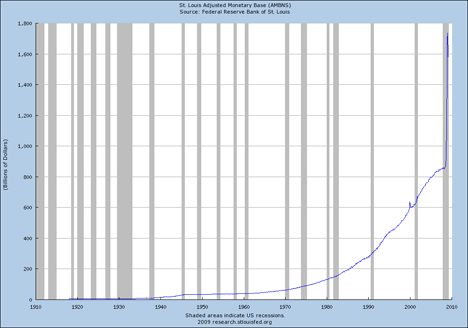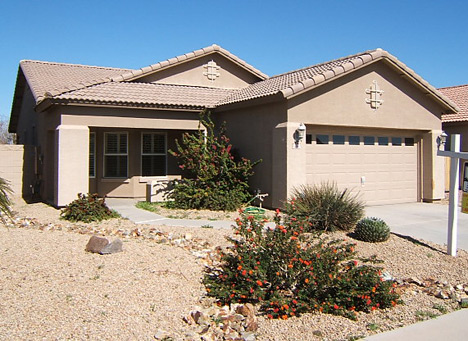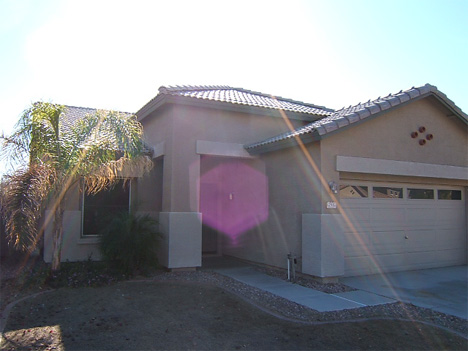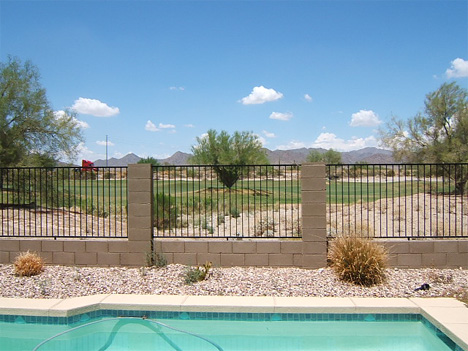Lender Brain Brady wrote a follow up to the post I wrote about 100 potential rental homes for sale for less than $100,000 in the Greater Phoenix area.
Brian cut right to the quick:
Investment properties make good sense when leveraged to the point where the rental income covers all costs. Most mortgage lenders require 25% down for the best rates. On a $100,000 property, that means that an investor will need some $30-35,000 for down payment, closing costs, and repairs to make the home tenant-ready. A $75,000 loan will most likely have a PITI payment of about $600.
I thought this was an interesting problem, so I prepared a spreadsheet on a typical $100,000 property. This is a real property, really for sale right now for $100,000. I took the closing costs as a discount from the seller, but the property is in a subdivision with a community pool, so the HOA fee is fairly high. We’re getting a home in a booming, freeway-convenient suburb — built in 2002, stucco walls, all-tile roof, 1,614sf, 3 bedrooms, 2 baths, 2-car garage on a 7,032sf lot. Decent, walkable schools, with plenty of retail less than a mile away. Appreciation should pace the market, but it won’t beat it. In other words, a nice bread-and-butter rental home that should rent easily and stay rented to premium tenants and should sell easily to owner-occupants on the way out. This is my kind of investment home.
Even though I’m making the seller pick up the closing costs, I’m adding in $5,000 for initial repair costs. This is high for a home like this, but I’d rather be too pessimistic than too optimistic. We’re figuring interest and property taxes using today’s true numbers. We’re allowing for interest, maintenance costs and the HOA fee. We’re assuming a 10% annual vacancy rate, even though I wold expect this property to do better than that. Finally, we’re assuming a relatively tepid 4% annual appreciation rate over an 8-year holding period.
How does the home pencil out? Before taxes (and ignoring any accelerated depreciation), the home should throw off around $1,300 a year in positive cash flow. After taxes, you’ll be closer to $1,800 a year. That’s not the riches of Croesus, but the property should pay for all of its costs the entire time you own it. Even assuming our relatively anemic 4% appreciation rate, your initial $30,000 investment could grow to around $58,000 in eight years. And that’s after you pay capital gains taxes on the investment. If you sell the property using an IRS Section 1031 tax-deferred exchange, you’ll bank even more.
Your real-life mileage will vary, of course, but this spreadsheet takes into account all foreseeable expenses. We bought the right home at the right price and we managed the investment wisely, selling at a premium price on the way out. It’s plausible that we could have done better — or worse — in the securities markets. It’s hard to imagine doing better in a low-risk investment.
I do these every day. There are homes out there that make me drool — so much value for so little money. If you want to talk about investing in a Phoenix rental home, a spreadsheet just like this one will be an essential step in our process. There is no way to make the wrong home profitable, and for that reason I don’t work with homes that are nothing but cheap. But when we know we have found the right home — the perfect rental home — that’s when we’ll run the numbers to make sure it works financially — month-by-month and year-by-year, in the service of your overall financial objectives.
I’m dying to talk about this stuff. I can’t stop talking about this stuff. If you want to explore your investment opportunities in the Phoenix rental home market, email me or give me a call at 602-740-7531.



